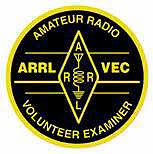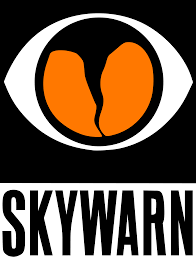We’ve discussed EMCOMM organizations in the past, so I’ll just remind everyone that while ARES is rapidly becoming the most prevalent EMCOMM organization there are others include RACES, SATERN, MARS, SHARES and REACT.
· RACES: Radio Amateur Civil Emergency Service. Normally setup and administered by local or state Emergency Management Agencies.
· SATERN: Salvation Army Team Emergency Radio Network. Amateur Radio Operators who are also volunteers with the Salvation Army operate this network.
· MARS: Military Affiliate Radio Service. This is a Department of Defense sponsored communications program managed by the Army, Navy, and Air Force.
· SHARES: Is a conglomerate of local, regional, and federal government agencies and several NGOs (non-governmental agencies) in addition to private communications companies.
· REACT: Is an emergency communications group originally comprised of Citizens Band radio operators. Eventually this group expanded to include amateur radio operators, FRS (Family Radio Service), GMRS (General Mobile Radio Service), and MURS (Multiple Use Radio Service).
As you might imagine, all of these groups share many common traits. One of which is a multi-tear deployment system. These usually involve immediate response (8-24 hours), short-term deployment (a few days), and long-term deployment (more than a few days).
The most crucial of the three is the immediate response. As a result, there is usually a designated group of people who are part of a “Rapid Response Team”. This team is known by various names including Rapid Emergency Deployment Team (RED team) in New Hampshire, Emergency Response Team (ERT), and Quick Response Team (QRT).
“Rapid Response Team” is a more common use term and is also the term utilized by ARES. The Rapid Response Team (or RRT) is usually a part of a larger group and includes not just those who deploy to specific served agencies, but support stations operating from home or other strategic locations.
The more effective the initial response during the initial minutes or hours of an emergency the more efficient the following hours or days of response will be. By effectively deploying at the beginning of the emergency we avoid playing endless “catch-up” with events.
Rapid Response is a two-tier process. Level I, the initial response is typically the creation of a net, requiring a Net Station to coordinate radio communications and possible deployment to certain served agencies depending upon the nature of the emergency. In some cases the situation may resolve within a few hours, ending the deployment.
In the event an emergency extends beyond a few hours the Level II RRT deployment will begin. Level I responders are usually equipped for 24 hour deployments. Level II provides the necessary relief to the initial responders and provides for 24-72 hour deployments.
In our case we can view our Weather Nets as examples of Level I and Level II deployments. Level I is the initial response, usually coming to an end as weather conditions quickly develop and disperse. In other cases the storms last for 8-24 hours, requiring stations to operate as Net Control and National Weather Service liaison stations in shifts.
Our Weather Net program has turned us into a relied upon resource of the National Weather Service.
We’re currently developing working relationships with the County EMA and Tanner Hospital. Our protocol for supporting those agencies will be modeled on our Weather Net Protocol.
As our relationship with other agencies develops we will need Rapid Response Teams for each of them. That means Net Control operators who can operate from home, some who can operate remotely, and others capable of deploying to the served agencies.
Next time we’ll talk about what traits are desirable for Rapid Response Team members.




